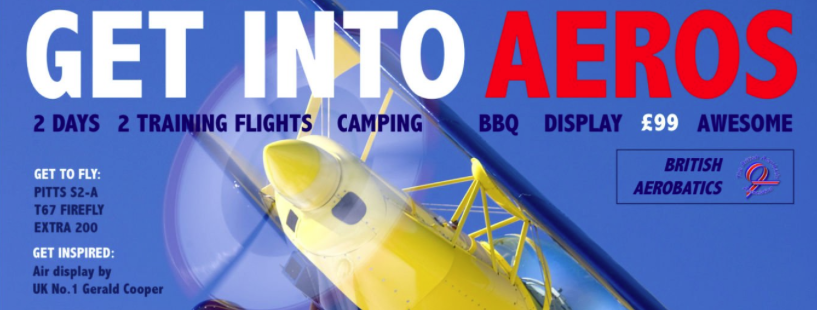Post by David Nichols, Group Managing Partner and acrobatic pilot (yes, really!)
We saw how Facebook has limited reach for big brands with broad profile of users in last week’s post here. But we also saw the high reach it achieves with the 18-34 group. This means it can work well for smaller brands with a tighter, younger core target. The British Aerobatics Association is one such small brand and below I share my personal experience of helping them successfully market an event to attract younger people into aerobatics.
1. Distinctiveness to drive penetration
The British Aerobatics Association (BAeA) has an issue shared by most niche sporting bodies – a few passionate people doing lots of great work but no budget to get the message out to recruit new blood. And yet, as we have posted on many times, brand growth relies on driving penetration to recruit new users.
The traditional way of trying to get new people signing up to the BAeA was to just wait for them to hear about it somehow, maybe from an instructor, and then turn up to an event at a distant airfield. This approach was yielding precisely 1 person every 3 years. As a small brand competing for attention in a large category of active sports we needed a new approach, and created a distinctive activation event. ‘Get Into Aeros’ was a weekend event with celebrities (Nigel Lamb from the Red Bull Air Race), BBQ, camping, talks from experts – just the kind of ‘experience’ that millennials are attracted to. And all this at an accessible price.
2. Cost effective niche marketing
The challenge was how to let potential pilots know about it. Previous ideas included posters on flying club noticeboards and broad emails to all people with a pilot’s licence. Both very time consuming, expensive and unlikely to grab the attention of a 25yr old. Step in Facebook. In an hour, I put together a Facebook campaign – 3 photos and a couple of sentences describing the event. Then, using their targeting tool, I selected themes and words that our potential target were most likely to like: airshows, aircraft, pilot, Red Bull Air Race etc. The target group I defined this way was 14,000 people in the UK. I set the budget limit to a modest £25, as suggested by Facebook.
“Facebook? What’s that go to do with flying?” came the incredulous reposes from the old guard. Such was the confidence in this new approach that discussions on how best to cancel the event were initiated! But we went ahead, with the event set for May, and the first Facebook campaign salvo activated on a Saturday in early January. By the Monday evening we had sold all 20 places for the event.
3. Direct path to purchase
Beyond tight targeting, another reason that Facebook worked well for Get into Aeros was the direct ‘path to purchase’. People clicking on the ad were taken straight to the sign-up page for the event. This is in contrast to consumer goods brands, when the path to purchase from Facebook is indirect: advertising’s main role is to raise awareness and create memory structure to help drive choice a later time.
4. Mobile matters
I saw at first hand just how important mobile has become for Facebook. It now accounts for over 84% of Facebook’s $6.3billion of ad revenue in Q2 of 2016, compared to only 41% in Q4 of 2015. And in our own tiny way, we were contributing to this trend: every single one of our young pilots had seen the Facebook ad on their smartphone, clicked the link and signed up.
In conclusion, Facebook is perfect for niche players targeting niche markets, including small businesses with limited budget. In my case, a target that was disparate, hard to identify & harder still to reach is now instantly accessible with specific, tailored messages.
